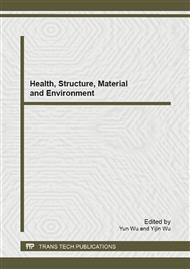p.552
p.560
p.566
p.572
p.580
p.586
p.592
p.596
p.602
Study on the Effect of Tool Geometrical Parameters on Cutting Forces Based on Finite Element Method
Abstract:
Based on finite element software DEFORM-3D, a three-dimensional oblique cutting model for aerospace aluminum alloy was built. The material’s flow stress behavior was described with Johnson-Cook constitutive equation. The separation of the chips with the workpiece was realized by the combination of adaptive remeshing technique and separation criterion. The material’s failure was defined by adopting Cockcroft & Latham fracture criterion. The tool-chip friction model was the combination of a Coulomb friction model and shear (sticking) friction model. To validate the finite element model, cutting tests were conducted. The effects of tool geometrical parameters such as flank wear, cutting edge inclination and corner radius on cutting forces were analyzed by three-dimensional oblique finite element model.
Info:
Periodical:
Pages:
580-585
Citation:
Online since:
February 2013
Authors:
Price:
Сopyright:
© 2013 Trans Tech Publications Ltd. All Rights Reserved
Share:
Citation:


